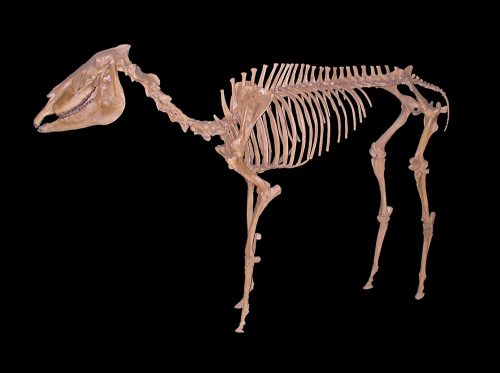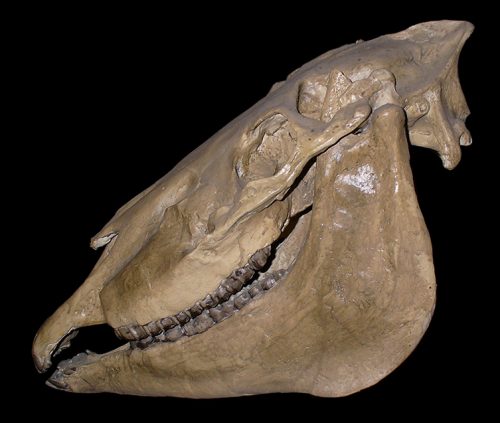The “Grandfather” to the modern horse, Pliohippus appears to be the source of the latest radiation in the horse family. It is believed to have given rise to Hippidion and Onohippidion, genera that thrived for a time in South American, and to Dinohippus which in turn led to Equus.
 Where & When?
Where & When?
Fossils of Pliohippus are found at many late Miocene localities in Colorado, the Great Plains of the US (Nebraska and the Dakotas) and Canada. Species in this genus lived from 12-6 million years ago.
Did Pliohippus live during the Pliocene?
(Or, how do you manage to miss an entire epoch?)
As incredible as it may sound, recent research shows that Pliohippus and the Pliocene have shrunk in duration so that they completely missed each other!

The problem is twofold. First of all, the epochs like the Pliocene and Miocene are all compared to marine sediments in Europe. It is difficult, although not impossible, to compare the ages of horses with British invertebrate fossils.
Over the years, refinements in our understanding of the Pliocene have resulted in the shrinking of that epoch. It is now believed to have covered a period ranging from about 5.3 to 1.75 million years ago. It formerly included North American land mammals ages that are now regarded as being late Miocene.
Our concept of the genus Pliohippus has also shrunk. In essence, Pliohippus has been split into two genera. Pliohippus now includes horses with large facial depressions in front of their eyes. These lived during the Miocene. The second genus, Dinohippus, includes horses with smaller facial depressions which lived into the Pliocene. Equus lacks these depressions.
The shrinking of the Pliocene and Pliohippus has resulted in the unhappy complication that the namesake of the Pliocene did not live during this time period.

This skull of Pliohippus shows the characteristic pre-orbital fossae — deep depressions in front of the eyes. The function of this cranial structure is unknown. It may have been a site of attachment for lip muscles
In 1920, William King Gregory advanced an alternative hypothesis. Instead of being filled with muscle, he suggested that these fossae were continuous with the nasal diverticulum, a nostril side branch that horses may use as a resonating chamber when vocalizing. Perhaps Pliohippus could produce vocalizations that Equus cannot.